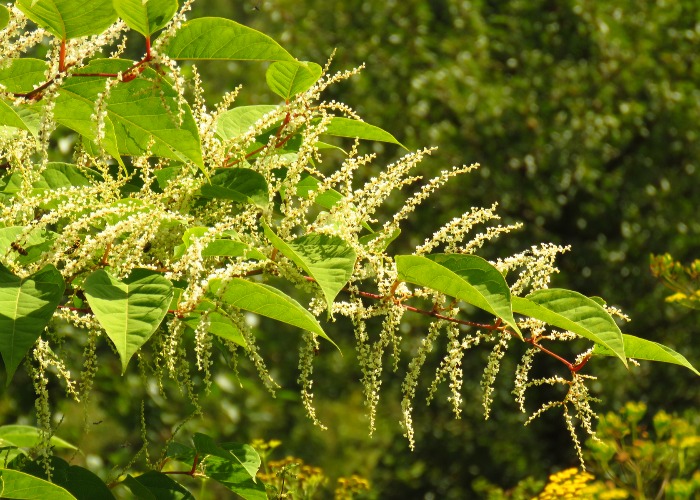Japanese knotweed epidemic threatens homes this spring

While the arrival of spring will (hopefully) welcome in some sunnier skies, it could also bring a dangerous spread of invasive plants
Homeowners are being warned to watch closely for signs of the notorious plant Japanese knotweed.
The invasive and fast-spreading weed is particularly likely to crop up in areas that have been hit by recent severe flooding – for example, Yorkshire, the Midlands and some areas in South East and South West England – according to Japanese knotweed removal firm Environet.
When flooding occurs, parts of the plant's underground stems detach and are swept up with the floodwater, spreading to new locations to wreak further havoc.
READ MORE: 13 garden diseases and disorders – and how to fight back
Last year, most parts of England saw above-average rainfall in October, with some areas receiving double their average monthly total, according to the Environment Agency.
This was followed by heavy rainfall in November, with more than 150 flood alerts in place across England, and rivers such as the Severn, Don, Derwent, Trent and Avon bursting their banks.
Be vigilant and act quickly
Nic Seal, founder and managing director of Environet, said those whose homes or gardens had been flooded should keep a careful eye out for the plant, as well as for giant hogweed and Himalayan balsam (pictured below), other problematic plants known to spread through flooding.

“People with properties that back on to watercourses are particularly at risk and should assess any new green shoots as they emerge this spring,” he said.
Those who do discover unwelcome additions to their gardens should act fast, he added. “If identified and dealt with swiftly, removing them will be more straightforward, but new infestations can become a major problem if left unchecked and allowed to become established.”
Japanese knotweed is dangerous because of its extensive underground roots, which can cause damage to driveways, drainage systems, boundary walls and gardens if left untreated. It has been claimed that the weed can damage buildings and foundations, though there is some debate about this.
House sellers beware
In any case, because of the risk posed by the plant, many mortgage lenders will not lend on properties where Japanese knotweed is found, or sometimes even when it is visible on neighbouring properties, unless a treatment plan is in place.
Buyers are also wary of affected properties, with a survey carried out by YouGov for Environet last year finding that 50% would not proceed with a purchase if a property had Japanese knotweed, while the majority of those who would go ahead would expect a price reduction.
Environet said that in their experience, the typical discount for affected properties was 10%, dropping to 2-5% if the property had already been professionally treated.
To see how much of a problem Japanese knotweed is in your area, check out Environet’s Japanese Knotweed Heatmap. You can also get an estimate of how much it might impact your property’s value using the company’s Valuation Impact Model.
READ MORE: World's worst property nightmares
Featured image: Przemyslaw Muszynski/Shutterstock
Comments
Be the first to comment
Do you want to comment on this article? You need to be signed in for this feature